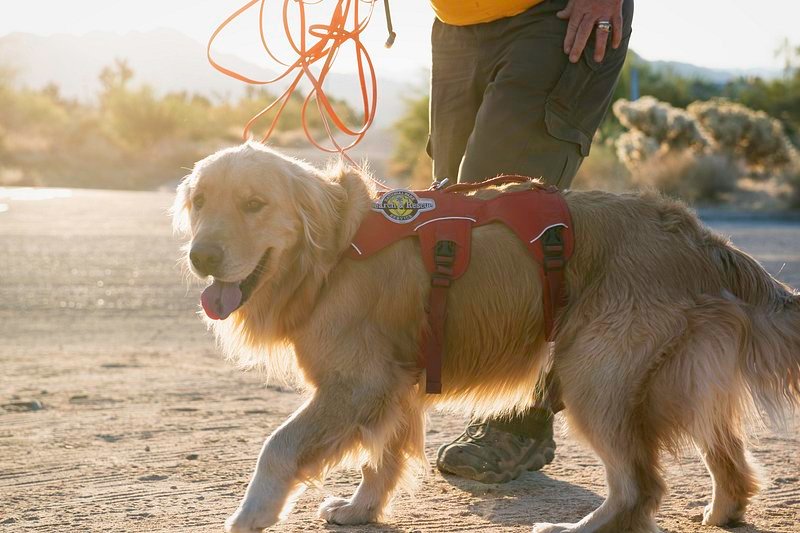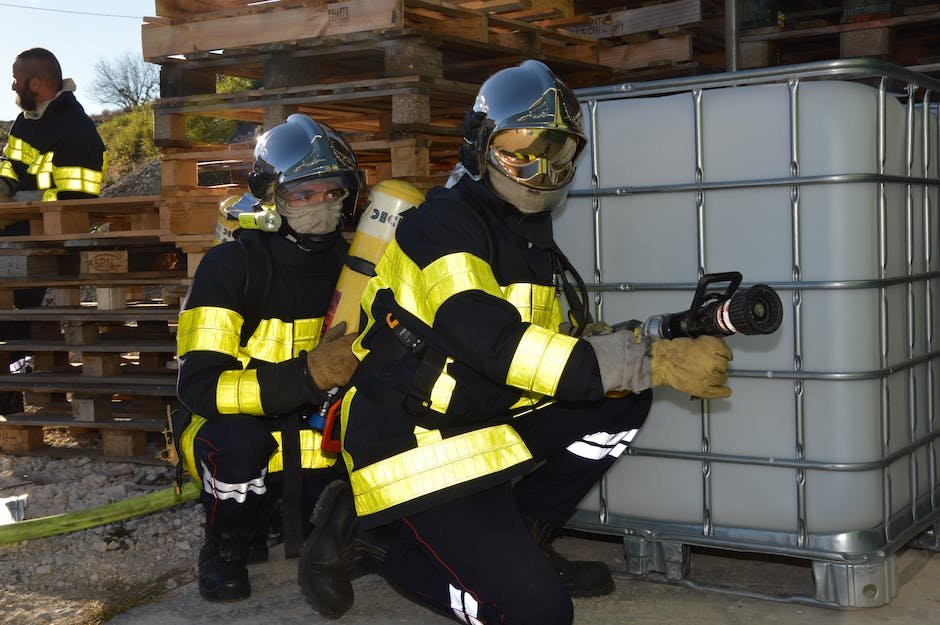The world is full of ordinary heroes, but amidst them, there are four-legged companions who possess a unique ability to save lives when disaster strikes. Trained in the art of fire rescue, these courageous canines leap into action with unwavering determination and unwavering loyalty, serving as an invaluable asset to their human counterparts. While the image of a heroic dog dashing through flames may seem like the stuff of movies, the reality is that fire rescue dogs play a crucial role in emergency situations, working tirelessly to find and rescue trapped survivors. In this article, we delve into the fascinating world of training these remarkable canines, exploring the methods and techniques used to transform them into the fearless heroes we know them to be. So, buckle up and prepare to dive into the world of fire rescue dog training—a captivating journey that showcases the true spirit of courage, dedication, and the unbreakable bond between humans and their furry best friends.
Table of Contents
- Training a Dog for Fire Rescue: Unlocking the Hero Within
- Building a Strong Foundation: Essential Skills for Fire Rescue Training
- Understanding the Canine Instinct: Developing Search and Rescue Abilities
- Fire-Proofing Fido: Training Techniques to Prepare Your Dog for Fire Emergencies
- Harnessing the Strength of the Pack: Establishing Effective Teamwork in Fire Rescue Training
- Q&A
- Final Thoughts

Training a Dog for Fire Rescue: Unlocking the Hero Within
Every dog has the potential to be a hero, and when it comes to fire rescue operations, their abilities are truly showcased. By undergoing specialized training, these four-legged heroes can be equipped with the skills needed to save lives and assist in emergency situations.
One of the key aspects of training a dog for fire rescue is obedience. Dogs must learn to follow commands flawlessly, even in high-pressure situations. Through consistent reinforcement and positive reinforcement techniques, trainers help these dogs develop their skills and strengthen their bond with their handlers.
A crucial element of fire rescue training is search and rescue operations. Dogs are trained to use their acute sense of smell to locate missing individuals, alert their handlers, and guide them to safety. Whether it’s navigating through smoke-filled buildings or digging through rubble, these courageous canines are able to locate and rescue those in need.
To ensure the safety of both the dog and the victims, various simulation exercises are conducted during training. These exercises help familiarize the dogs with the unpredictable nature of rescue missions and enable them to handle various scenarios, such as climbing ladders, navigating obstacles, and even rappelling from heights.
Moreover, physical fitness is critical for fire rescue dogs. Regular exercise and conditioning are incorporated into their training routines. This includes endurance building, agility exercises, and swimming, which help improve their stamina and overall physical capabilities.
Apart from their physical prowess, mental preparedness is equally essential. These dogs are trained to remain calm and focused even amidst chaos and loud noises, allowing them to perform their duties effectively.
In conclusion, training a dog for fire rescue is a monumental task that requires dedication, consistency, and immense patience. These exceptional animals, through their bravery and unwavering commitment, embody the hero within. By unlocking their potential, we unleash a force for good that can make a real difference in times of crisis.

Building a Strong Foundation: Essential Skills for Fire Rescue Training
In the dynamic world of fire rescue, a solid foundation of essential skills is crucial to saving lives and ensuring the safety of both firefighters and victims. From basic fire suppression techniques to advanced medical protocols, firefighters must be equipped with a diverse range of abilities to navigate the ever-evolving challenges they face. Here, we explore some key skills that form the building blocks for effective fire rescue training:
- Fire Suppression Techniques: Mastering fire suppression techniques is at the core of firefighting. From understanding different types of fires to utilizing appropriate tools and equipment, firefighters learn the ins and outs of extinguishing flames swiftly and safely.
- Emergency Medical Services: In addition to fighting fires, firefighters often serve as first responders to medical emergencies. Thus, comprehensive training in emergency medical services is imperative. It encompasses CPR, administering basic life support, and providing life-saving interventions to stabilize patients until paramedics arrive.
- Search and Rescue Operations: Rescuing individuals trapped in hazardous environments is a challenging but vital responsibility of fire rescue teams. Learning techniques for searching, accessing, and extricating victims from various scenarios, including collapsed structures or confined spaces, forms an essential skill set for firefighters.
- Hazardous Materials Awareness: The ability to identify and respond to hazardous materials incidents is crucial for firefighter safety and public health protection. Training ensures personnel have knowledge of different types of hazardous substances, proper containment procedures, and the ability to establish decontamination protocols.
- Teamwork and Communication: Effective teamwork and communication are the pillars that support a successful fire rescue mission. Firefighters learn to work seamlessly with their colleagues, communicating crucial information, coordinating efforts, and maintaining situational awareness to enhance overall operational effectiveness.
By focusing on these essential skills, fire rescue training establishes a strong foundation that prepares firefighters for the diverse challenges they may face in the field. A well-rounded skill set allows them to respond confidently, mitigate risks, and save lives, making our communities safer every day.

Understanding the Canine Instinct: Developing Search and Rescue Abilities
As humans, it is often bewildering to witness the extraordinary search and rescue abilities possessed by our canine companions. Understanding the intricate workings of their instinctive behavior can help shed light on their remarkable skills in locating and rescuing individuals in distress.
One key aspect to comprehend is that dogs rely heavily on their acute sense of smell. Their olfactory system is truly remarkable, with capabilities far surpassing our own. Canines possess up to 300 million scent receptors, compared to our mere 5 million, making their sense of smell up to 100,000 times more powerful than ours. It is through this remarkable sense that they can detect the faintest traces of human scent, even if it has been diluted or dispersed over time.
Additionally, dogs possess an uncanny ability to read human body language and detect subtle changes in behavior. They can effectively pick up on distress signals and emotional cues, often reacting even before these signs become apparent to us. This heightened attention towards human behavior allows them to quickly assess situations and determine the most appropriate course of action in assisting with search and rescue efforts.
To further enhance their innate abilities, canines undergo extensive training to streamline their search and rescue skills. This includes obedience training, scent detection training, agility training, and simulations of real-life scenarios. By honing these skills, dogs become reliable and efficient partners in search and rescue operations, providing a vital assistance when time is of the essence.
Understanding the depth of canine instinct and their commitment to helping others is truly awe-inspiring. Through their remarkable sense of smell, acute observation of human behavior, and rigorous training, these devoted creatures become invaluable assets in search and rescue missions, offering hope and reassurance in times of dire need.

Fire-Proofing Fido: Training Techniques to Prepare Your Dog for Fire Emergencies
Imagine this scenario: a fire breaks out in your home unexpectedly, and you’re left with only seconds to gather your belongings and escape to safety. In the midst of the chaos, your loyal canine companion is by your side, relying on you for guidance. Will they instinctively know what to do in the face of danger? This post seeks to provide you with valuable training techniques to prepare your furry friend for fire emergencies, ensuring their safety and well-being.
1. Create a Fire Escape Plan
It is crucial to have a well-thought-out fire escape plan in place, not only for yourself but also for your furry friend. Take the time to familiarize yourself with different escape routes in your home. Identify the safest exits and set up a designated meeting point outside. Train your dog to follow your lead and associate specific commands with the escape plan. Repetition and consistency are key during this process.
2. Teach Basic Fire Safety Commands
Teaching your dog basic fire safety commands can be a lifesaver. Start by training them to respond to the sound of a smoke alarm or fire alarm, associating it with an immediate action such as “Find Exit” or “Go Outside.” Incorporate obedience training into these commands, reinforcing their knowledge through positive reinforcement techniques. Remember, practice makes perfect!
3. Introduce Your Dog to Fire Safety Equipment
Familiarize your four-legged friend with fire safety equipment such as fire extinguishers, fire blankets, and emergency evacuation kits. Allow your dog to explore these items under supervision, making it a positive experience. By becoming accustomed to these tools, your dog will be less likely to panic during an actual emergency, enabling them to stay calm and assist in the evacuation process.
By implementing these training techniques, you can help fire-proof your beloved Fido, ensuring they are prepared to face a fire emergency with confidence and composure. Remember, investing time and effort into their training today could mean all the difference in keeping them safe tomorrow!
Harnessing the Strength of the Pack: Establishing Effective Teamwork in Fire Rescue Training
In the fast-paced and high-pressure environment of fire rescue training, establishing effective teamwork is crucial for the success and safety of both the team members and the victims they strive to save. By harnessing the strength of the pack, fire rescue teams can overcome challenges, enhance their skills, and optimize their performance.
To establish effective teamwork, it is essential to cultivate a shared sense of purpose and trust within the team. Encouraging open communication and active listening ensures that all team members feel valued and heard, allowing for the exchange of ideas, feedback, and information. Collaboration and cooperation are the foundations of a strong team, where skills and knowledge can be pooled together to conquer even the most daunting training scenarios.
Additionally, recognizing and celebrating individual strengths and accomplishments is key to fostering a positive team dynamic. By acknowledging each team member’s unique expertise and contributions, a sense of camaraderie and mutual respect can flourish. This not only boosts morale but also enables the team to tap into the diverse skill sets and experiences of its members to adapt and overcome any obstacle.
In fire rescue training, effective teamwork can be the difference between life and death. By establishing a culture of trust, open communication, collaboration, and recognizing individual strengths, fire rescue teams can become an unstoppable force, ensuring the safety of both their team members and the communities they serve.
Q&A
1. What are the key qualities a dog should possess to excel in fire rescue training?
Dogs should exhibit traits like intelligence, agility, strength, and excellent obedience skills. A calm and resilient temperament is also essential for them to handle high-stress situations with courage.
2. How can I start training my dog for fire rescue?
Begin by teaching basic obedience commands like “sit,” “stay,” and “come.” Gradually introduce obstacle courses to improve their agility. Seek professional guidance to progress to more advanced fire rescue training.
3. Are specific breeds more suitable for fire rescue training?
While certain breeds like Labrador Retrievers and German Shepherds are commonly used due to their intelligence and trainability, any dog with the right qualities can excel in fire rescue training.
4. Can older dogs be trained for fire rescue, or is it better to start with puppies?
Age is not a barrier when it comes to training dogs for fire rescue. While starting with a puppy allows for earlier socialization, older dogs can be trained successfully by focusing on their existing strengths and adapting the training to their specific needs.
5. What are some essential skills a fire rescue dog should learn?
Fire rescue dogs should be trained to find and alert their handlers about people in distress, navigate through smoke-filled environments, locate and retrieve specific objects, and be comfortable wearing protective gear.
6. How long does it typically take to train a dog for fire rescue work?
The duration of training varies depending on the dog’s age, existing skills, and individual progress. On average, comprehensive fire rescue training can take anywhere from several months to a couple of years to achieve proficiency.
7. Can I train my dog for fire rescue on my own, or is professional guidance necessary?
While basic obedience training can be done independently with resources and online tutorials, specialized fire rescue training requires the expertise of experienced professionals to ensure safety, effective results, and adherence to established protocols.
8. What kind of rewards work best while training a fire rescue dog?
Positive reinforcement techniques, such as treats, toys, and praise, prove effective in motivating and rewarding fire rescue dogs. Finding the right reward that motivates your dog can aid in accelerating their progress during training.
9. How often should I train my dog for fire rescue?
Consistency is key. Regular training sessions, ideally at least three to four times a week, will facilitate skill retention and promote continuous improvement, but always consider your dog’s individual needs and abilities.
10. What precautions should I take to ensure my dog’s safety during fire rescue operations?
Prioritize your dog’s physical and mental well-being by providing them with proper protective gear, ensuring they stay hydrated and receive regular breaks. Regular health check-ups and vaccinations are also vital for their safety and overall fitness.
Final Thoughts
And there you have it – the inspiring journey of transforming a four-legged friend into a fearless hero. Training a dog for fire rescue is not just about teaching them commands, it’s about instilling a noble purpose within their hearts and unleashing their remarkable potential. From the first sniff of smoke to the final successful rescue, each step brings us closer to building a dedicated team of canine heroes who fearlessly face the flames, armed with loyalty, bravery, and an unwavering spirit.
As we bid farewell to this guide, remember that training a dog for fire rescue is not an endeavor solely for professionals. It is an opportunity for every dog owner to cultivate the extraordinary in their beloved pets, to harness their innate intelligence, and to unlock their capacity for selflessness. Let us not forget that these remarkable animals are not just our best friends, but our partners in courage, compassion, and hope.
So, whether you embark on this journey for a search and rescue organization, a local fire department, or simply to enhance your furry companion’s sense of purpose, remember that with dedication, patience, and a sprinkle of creativity, you can train your dog for fire rescue too. Let these extraordinary tales of valor serve as a reminder that our dogs, with their incredible loyalty and unwavering determination, possess the ability to save lives, and will continue to be our most devoted heroes.
As we sign off, let us encourage one another to spread awareness about the capabilities of these incredible canines, for in doing so, we pave the way for a future where dogs and humans collaborate seamlessly on the frontlines of fire rescue operations. Together, let’s ignite a passion for training, inspire countless pup parents, and foster a world where bravery is measured not only in the strength of our human hearts, but in the unwavering determination of our four-legged companions.
As an affiliate, my content may feature links to products I personally use and recommend. By taking action, like subscribing or making a purchase, you’ll be supporting my work and fueling my taco cravings at the same time. Win-win, right?
Want to read more? Check out our Affiliate Disclosure page.